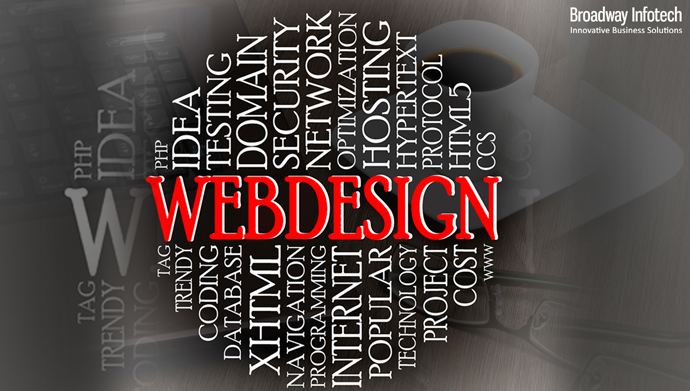Web design has become creative and competitive than it was in its initial years. Designers try to outperform others in order to get business. With more and more businesses heading towards the web, the designers have the opportunity to bag more projects and earn more profits.
In this blog, we’ll discuss the trends that ruled the website design industry in 2019 and that are supposed to guide the designers in the coming year.
1. Three-Dimensional Design

It is called 3D effect and its advantage is that it brings the virtual world close to the real. It is departing from the usual flat design by rounding the sharp edges of box corners and making subtle shadows of the objects.
2. Black-and-White Palettes

Colours are used to make interface more user-friendly but use of black-and-white pallets can further improve the visual appearance of the interface. The combination of black, white and a third colour appeared in the start of 2019 and remains dominant throughout the year. The black and white palette makes the features and functions of a site more prominent. A third colour can be used to highlight clickable elements.
3. Natural, Fluid Organic Shapes

Visitors find asymmetric and organic shapes more attractive than simple structures like square, rectangles and triangles. Natural shapes have more depth because they create an illusion of movement. Sites with natural designs look lively.
4. Thumb-Friendly Navigation

It pertains to the mobile sites and this design makes sites more mobile-friendly. Today, people browse more sites on mobiles than on desktops and laptops. Also, they like using mobiles with one hand and operate the phone with thumb. Single hand use of mobile has been the inspiration behind making navigation thumb-friendly in 2019.
5. Glitch Art

The art of glitch emerged as a design concept in 2019 and soon caught the attention of the virtual world. The designers started looking for ways to design sites with crinkled effects and distorted images.
6. Security-Focused Design

The year 2019 witnessed many incidents of breach of data and it is what forced designers to think about ways to include security features in site designs. It is a challenging task for designers and they are still looking for ways to include security features in their designs. This trend is expected to strengthen in the coming year.
7. Increase Visual Elements

In 2019, the designers increased the use of visual elements in designs and this experiment proved a game changer for websites. Visitors got more attracted towards visual content in comparison to plain text matter. In 2020, we’ll see more sites with visually appealing icons to present clickable features.
8. Minimalism

Minimalistic trends like grid layouts, text-based designs and monochromatic colours emerged at the start of 2019 and it looks that the designers would remain inspired with these trends in the coming year.
9. Micro-Interactions

Facebook is the biggest example of micro-interactions in sites. It made designer familiar with the icons for notifications and messages. In 2019, designers implemented the micro-interactions on websites. They started using icons for hover effect, chimes and scrolling animation. Another advantage of these icons is they make sites look smarter.
10. Introduction of Chatbots

The idea of using chatbots in web design first emerged in 2018 but it got wide acceptance only in 2019 with the emergence of artificial intelligence and machine learning. They become more inviting after getting new avatars. AI allowed high level of customization and integration with social media.
There can be more surprises in 2020 because website design is still evolving. Internet has emerged as a larger marketplace and every business wants to set up a shop. It would further increase the competition and design elements would be used as tools for marketing and branding.



